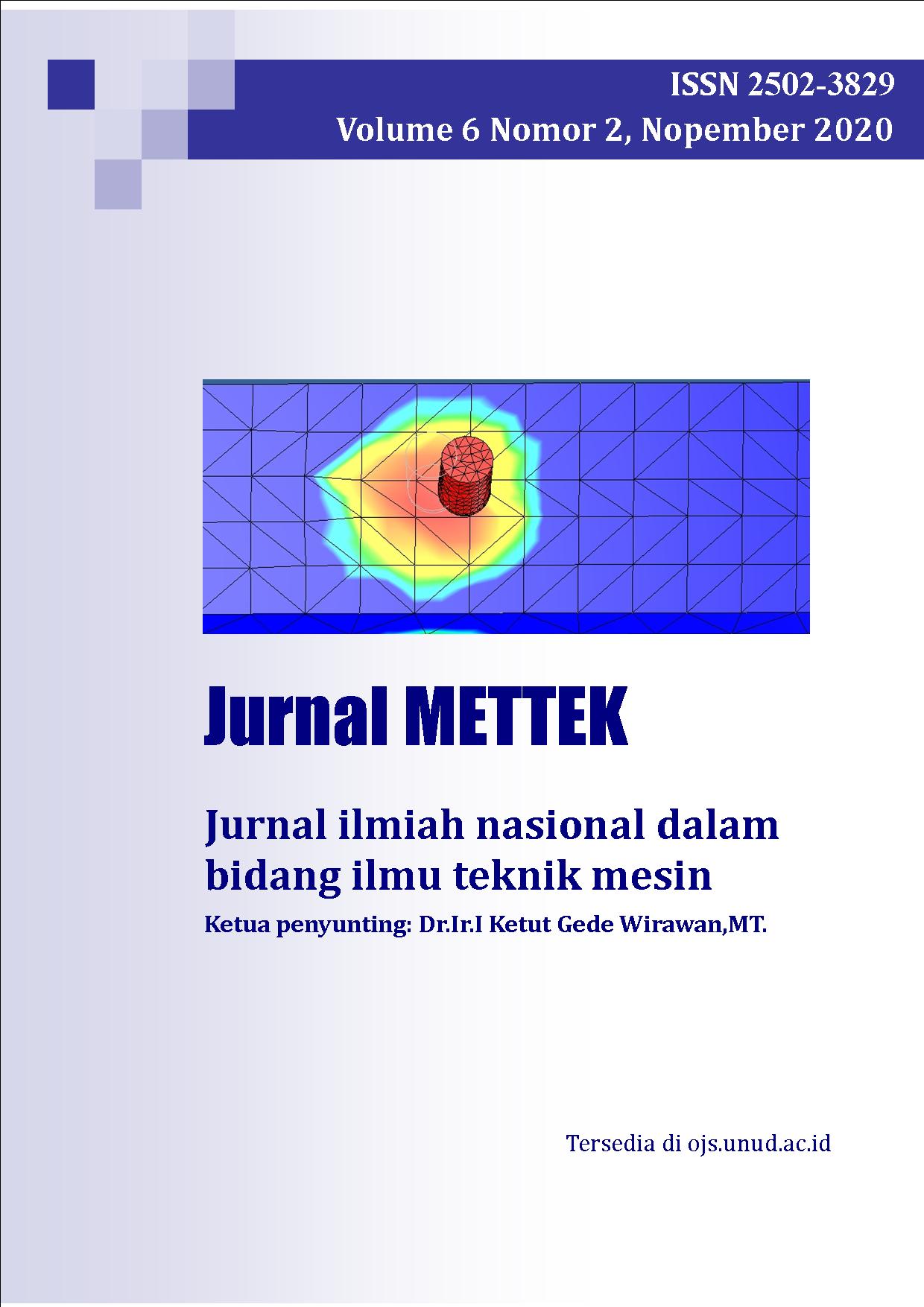Analisis Kekuatan Tarik dan Cacat Porositas pada Friction Welding Logam (FE, AL & FE-AL)
Abstract
Tujuan penelitian ini melakukan friction welding pipa (Fe), (Al), dan (Fe-Al) dengan mesin bubut. Metode penelitian ini adalah eksperimen, dengan penyambungan spesimen pipa silinder dengan bantuan mesin bubut. Proses pengujian hasil sambungan menggunakan Destructive Test yaitu uji tarik dan Non-Destructive Test yaitu liquid penterant untuk mengetahui cacat porositas. Hasil penelitian menunjukkan teknik friction welding serta direct drive welding bisa digunakan dalam proses penyambungan pipa (Fe) dan penyambungan pipa (Al). Pada penyambungan logam tak sejenis yakni antara pipa (Fe) dan pipa (Al) tidak dapat menghasilkan ikatan sambungan karena perbedaan titik leleh material dan tingkat kekerasan material. Suhu sangat berpengaruh terhadap sambungan, hasil sambungan lasan yang baik dapat dicapai dengan meningkatkan temperature pengelasan pada saat proses pengerjaan. Cacat porositas terjadi karena butiran tidak menghasilkan fusi sehingga logam tidak bersatu menyeluruh, hal ini disebabkan temperature tidak mencapai yang dibutuhkan. Temperature yang tinggi dapat dihasilkan dari RPM yang semakin tinggi serta lamanya waktu benda bergesekan. Sehingga benda kerja yang dihasilkan memiliki nilai uji tarik yang baik dan cacat porositas dapat direduksi.
The purpose of this research is to perform pipe friction welding (Fe), (Al), and (Fe-Al) with a lathe. This research method is experimental, by connecting the specimen cylinder pipe with the help of a lathe. The process of testing the connection results using the Destructive Test, namely the tensile test and the Non-Destructive Test, namely the liquid penterant to determine porosity defects. The results showed that friction welding techniques and direct drive welding can be used in the process of connecting pipe (Fe) and pipe joining (Al). In non-similar metal joints, namely between pipe (Fe) and pipe (Al), it cannot produce connection bonds due to differences in the melting point of the material and the level of material hardness. Temperature greatly affects the joint, good weld joint results can be achieved by increasing the welding temperature during the working process. Porosity defects occur because the grains do not produce fusion so that the metal does not come together completely, this is because the temperature does not reach the required temperature. A high temperature can be generated from a higher RPM and the length of time the object rubs. So that the resulting workpiece has a good tensile test value and the porosity defects can be reduced.
Downloads

This work is licensed under a Creative Commons Attribution-NonCommercial-ShareAlike 4.0 International License.

This work is licensed under a Creative Commons Attribution-NonCommercial-ShareAlike 4.0 International License.







